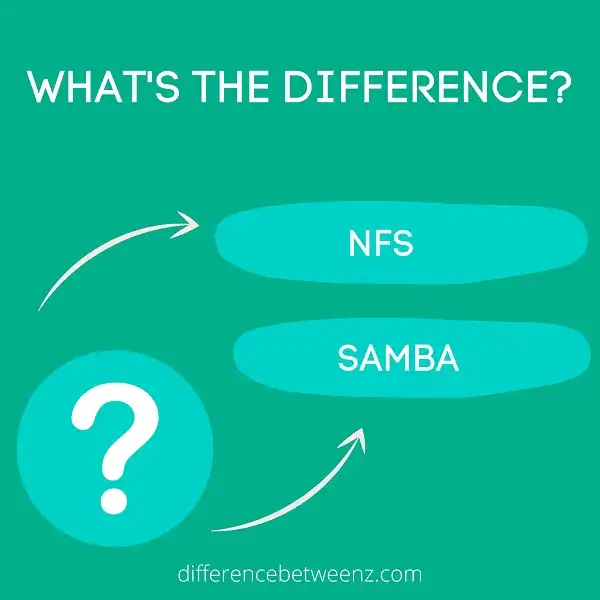There are a few different ways that you can share files and folders between your computer and devices on your network. One popular option is using the Network File System, or NFS, which allows you to mount remote directories as if they were part of your local file system. Another option is Samba, which uses the Server Message Block protocol to provide similar functionality. In this article, we’ll take a look at the difference between NFS and Samba, and help you decide which one is best for you.
What is NFS?
NFS, or the Network File System, is a protocol that allows for shared access to files over a network. NFS is most commonly used in Unix-based systems, but can also be used in Windows and other operating systems. NFS allows for a central server to provide access to files for multiple clients. This can be useful for companies or organizations that have many users who need access to the same files. NFS can also be used to share files between different machines, such as between a desktop and a laptop. NFS is typically faster and more reliable than other methods of sharing files over a network, such as FTP.
What is Samba?
Samba is a free and open-source software suite that provides file and print services to Samba clients. It runs on most Unix-like operating systems, such as Linux, BSD, and Solaris. Samba uses the common Internet File System (CIFS) protocol to provide seamless file and print services to Windows clients. Samba is also capable of running Microsoft Active Directory services. Samba is an important tool for networking Windows and Unix-based computers in business environments. Samba provides a variety of benefits for businesses, including increased compatibility, security, and performance. Samba is an essential protocol for any business that relies on a mixed Windows and Unix environment.
Difference between NFS and Samba
NFS and Samba are two different protocols that can be used to share files between computers. NFS, or Network File System, is a protocol developed by Sun Microsystems that allows for the sharing of files over a network. Samba, on the other hand, is an open-source implementation of the SMB/CIFS protocol that was originally developed by Microsoft. Both NFS and Samba allow for the sharing of files between Linux and Windows computers, but there are some key differences between the two protocols. NFS is typically faster than Samba, but it does not support authentication methods such as Active Directory. In addition, NFS does not support file locking, which can be an issue if multiple users are accessing the same file simultaneously. Samba supports both file locking and authentication methods, but it is generally slower than NFS. When choosing a protocol for file sharing, it is important to consider the needs of your specific network.
Conclusion
NFS and Samba are both file-sharing protocols that can be used in a business setting. However, there are some key differences between the two. NFS is typically more reliable and faster than Samba, but it is also more difficult to set up. If you’re looking for a quick and easy way to share files between computers, Samba may be a better option for you. However, if reliability and speed are your top priorities, NFS is the way to go.


